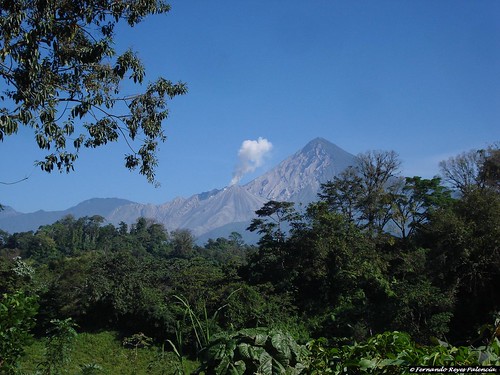
Santiaguito y Santa MarГa
Quetzaltenango (or Xelajú) is the second largest city in Guatemala, located in the mountain valleys of Volcán Santa Maria some 7,700 feet above sea level. Quetzaltenango is surrounded by a diverse landscape of volcanoes, hot springs, mountains, valleys, and rivers. The region is known for its fertile grounds ideal for growing coffee. Tourists come to Quetzaltenango not only to enjoy its surrounding beauty, but also for its large native markets and famous intricate weavings. More recently, Quetzaltenango has become a destination favorite for foreign students coming to study Spanish in the city’s many slanguage schools.
History
Quetzaltenango was originally part of the Maya empire but was captured by the Quiché people in the 14th century. The city was a major center of the Quiché Kingdom until the arrival of the Spanish Conquistador, Pedro de Alvarado, who defeated and killed the Quiché ruler, Tecún Umán. After destroying the city, Pedro de Alvarado ordered it rebuilt and changed the city’s name from Xelajú to Quetzaltenango. During the 19th century, coffee production became a major part of Quetzaltenango’s prosperity; the wealth led to the construction of number of fine 19th century architecture.
Attractions
Quetzaltenango is famous for its intricate weavings and fabrics which are regularly sold in the surrounding villages and in Quetzaltenango on market days, which take place on the first Sunday of every month. On market days, the central square of Quetzaltenango is lined with booths, stalls, and stands and crowded with women selling their wares. The neighboring village of San Francisco El Alto also has a large market on Fridays, selling handicrafts and various livestock and pet animals.
The architecture in Quetzaltenango is incredible as well. There are still some fine Belle Époque architecture left standing in addition to a mix of Greek and colonial structures. Of note is the Iglesia de San Nicolas, a bluish church on the east side of Parque Benito Juarez that is known for its unique baroque design. The Parque Benito Juarez is itself a great park to relax, exercise, find shade, and enjoy some cold ice cream.
The Catedral del Espiritu Santo is another impressive architectural building, located on the southeast part of Parque Centroamerica. The cathedral was built in 1535 and features figurines of various saints on the inside. The Parque Centroamerica, incidentally, is filled with other architectural masterpieces like the magnificent Pasaje Enríquez building.
There are a number of museums in Quetzaltenango as well, including the Museo de Historic Natural (Museum of National History) and the Museo de Ferrocarril de Los Altos (Museum of Art and the Los Altos Railroad Museum). The Museum of National history has a collection of pre-Columbian artifacts and pottery, mainly from the Quiché kingdom. The Museum of Art and the Los Altos Railroad Museum are both in the same building. The former exhibits Quiché art while the latter tells the history of the railroad that connected Quetzaltenango to the other towns and villages in the western highlands.
A few traditional highland villages near Quetzaltenango may be worth a visit. San Miguel Totonicapán is three miles south of Quetzaltenango and is famous for its wooden toys and handicrafts. They have a market on Saturdays that sell textiles, wax figures, and ceramics. Almolonga is another charming village south of Quetzaltenango and close to San Miguel Totonicapán. Almolonga has markets that sell fruits on Wednesdays and Saturdays. A little further south of Almolonga are several hot springs that are popular among tourists.
Quetzaltenango and its surrounding mountains, hills, and valleys provide a perfect setting for off-roading, mountain biking, treks, and long hikes. Mountain villages are dotted throughout, providing pit stops for expeditions that last more than a day.
Shopping
On days when the native markets aren’t open at the central square, the city has fixed markets elsewhere like at Mercado Minerva and Mercado La Democracia; both sell a large stock of handicrafts and artisanía that are often priced lower than the goods sold on market days at central square. Quetzaltenango is particularly noted for its quality glassware and there are stores selling these glasses in the same area, Zona 3, as Mercado Minerva and Mercado La Democracia.


Comments